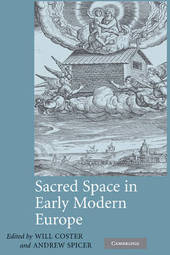
|
Sacred Space in Early Modern Europe
Hardback
Main Details
Description
The medieval landscape was marked by many sacred sites - churches and chapels, pilgrimage sites, holy wells - places where the spiritual and temporal worlds coincided. Although Max Weber argued that the Reformation brought about the 'disenchantment of the world', this volume explores the many dimensions of sacred space during and after the religious upheavals of the early modern period. The essays examine the subject through a variety of contexts across Europe from Scotland to Moldavia, but also across the religious divisions between the Catholic, Orthodox, Lutheran and Calvinist Churches. Based on original research, these essays provide new insights into the definition and understanding of sanctity in the post-Reformation era and make an important contribution to the study of sacred space.
Author Biography
Will Coster is Lecturer and Head of History at De Montfort University. His previous publications include Baptism and Kinship in England 1450-1800 (2004). Andrew Spicer is Lecturer in Early Modern European History at Oxford Brookes University. He is the co-editor of Society and Culture in the Huguenot World, 1559-1685 (2002).
Reviews'This excellent collection, with not a single weak contribution, demonstrated the centrality of material culture and sacred geography to understanding the Reformation and Counter-Reformation.' The Journal of Ecclesiastical History
|